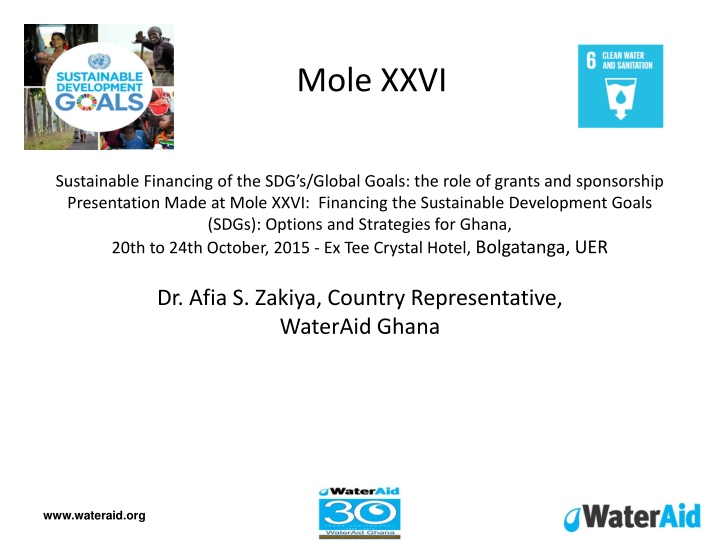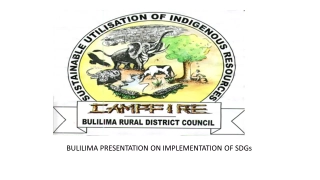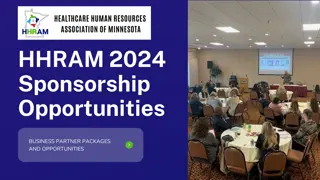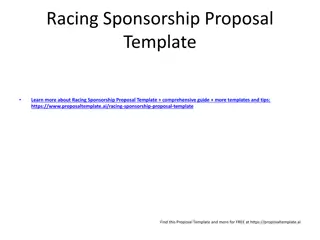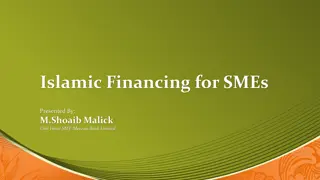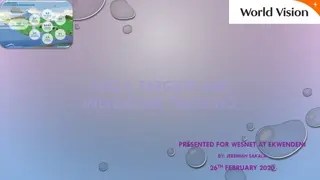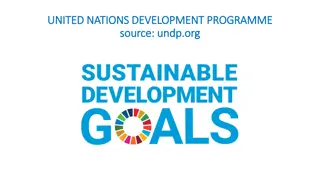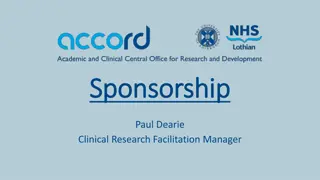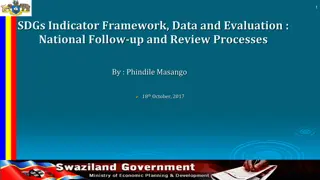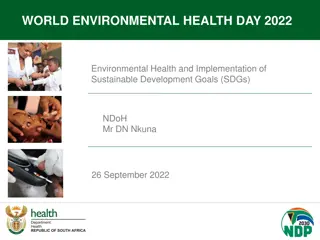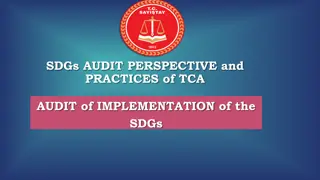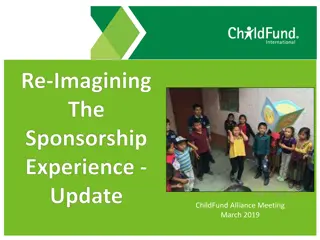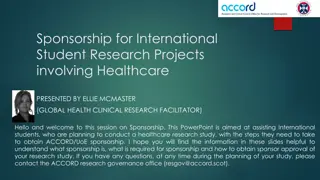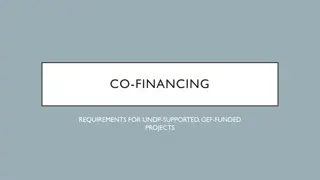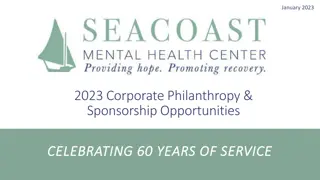Sustainable Financing of the SDGs: The Role of Grants and Sponsorship
WaterAid Ghana's presentation at Mole XXVI highlights the importance of grants and sponsorship in funding the Sustainable Development Goals (SDGs). The focus is on WASH sector funding, sustainable development financing, and the global efforts to achieve universal access to water, sanitation, and hygiene by 2030.
Download Presentation

Please find below an Image/Link to download the presentation.
The content on the website is provided AS IS for your information and personal use only. It may not be sold, licensed, or shared on other websites without obtaining consent from the author.If you encounter any issues during the download, it is possible that the publisher has removed the file from their server.
You are allowed to download the files provided on this website for personal or commercial use, subject to the condition that they are used lawfully. All files are the property of their respective owners.
The content on the website is provided AS IS for your information and personal use only. It may not be sold, licensed, or shared on other websites without obtaining consent from the author.
E N D
Presentation Transcript
Mole XXVI Sustainable Financing of the SDG s/Global Goals: the role of grants and sponsorship Presentation Made at Mole XXVI: Financing the Sustainable Development Goals (SDGs): Options and Strategies for Ghana, 20th to 24th October, 2015 - Ex Tee Crystal Hotel, Bolgatanga, UER Dr. Afia S. Zakiya, Country Representative, WaterAid Ghana www.wateraid.org
OUTLINE I. Introduction II. Historical funding of the MDGs via Grants and sponsorship WASH Sector Highlights III. WASH Funding and the Politics of Sustaining Development Financing in the Post 2015 Era: Beyond the Savior Complex IV. How much poverty and how much funding for SDGs/GG is needed? V. Conclusions & Recommendations www.wateraid.org
Can we change the world with 17 ? www.wateraid.org
I. Introduction WaterAid is successfully engaging with post-2015 MDG decision-makers to ensure the new Sustainable Development Goals include ambitious targets for universal access to water, sanitation and hygiene - to end extreme poverty by 2030 and ensure sustainable development Recognizing that 2.5 billion people currently live without access to improved sanitation, 1 billion people currently defecate in the open each day, and 748 million people live without access to clean, reliable water, our mission and vision to end WASH inequality and deprivation remains stronger than ever. The basic human right to water and sanitation is vital to holistic development and contributes to the well-being, education, and health of all people. Our post-2015 vision therefore, is of a development framework that links poverty eradication and sustainable development. www.wateraid.org
I. Introduction The current evolving development cooperation landscape sees: the interrelationship of all sources of development finance; the synergies between financing objectives across the three dimensions of sustainable development - economic, social and environmental aspects, and, the recognition of their interlinkages, so as to achieve sustainable development in all its dimensions. Women for water and sanitation declaration WA s vision is expressed in the declaration by Women for water and sanitation which calls for the global community to make improved drinking water, sanitation and hygiene (WASH) a top priority in the Post-2015 Development Agenda and to provide strong political and financial commitments towards universal access to WASH by 2030. WA is a signatory to the declaration www.wateraid.org
II. Historical funding of the MDGs via Grants and sponsorship WASH Sector Highlights Foundation Grants & Support for Water-related Issues Growing March 2012 Foundation Center report, Foundation Funding for Water, Sanitation, and Hygiene noted that the number of U.S. charitable foundations awarding grants for water, sanitation, and hygiene (WASH) projects around the world had more than tripled. The report found that between 2003 and 2010 this growth in the number of active funders was accompanied by a nearly five-fold increase in the number of organizations receiving these grants, to the tune of $144 million in 2009-2010. And, while WASH funding as a proportion of international grantmaking overall grew from 0.2 percent in 2003, it remains very small (1.7 percent in 2010). www.wateraid.org
II. Historical funding of the MDGs via Grants and sponsorship WASH Sector Highlights Among other key findings in the report: Number of funders: The total number of foundations awarding WASH grants has jumped from 24 in 2003 to 78 in 2010. Geographic distribution: 30 percent of all grant dollars in 2009 and 2010 went to Africa, the largest share of any geographic region, while 18 percent went to Asia, and 9 percent went to Central/South America. Purpose of grants: The largest proportion of foundation grant dollars support water sector policy and administration (20 percent), followed by basic drinking water supply (17 percent), WASH research (14 percent), and basic sanitation (14 percent). www.wateraid.org
II. Historical funding of the MDGs via Grants and sponsorship WASH Sector Highlights GHANA MDG Target of 87% w/improved drinking water Foundations gave over $184.57Million to support MDG7 Since 2005 Foundations have increased their giving from 2billion 4.5billion MDG 7 received over 47% overall funding from foundations 2002-20012 Ghana received $499 million www.wateraid.org
II. Historical funding of the MDGs via Grants and sponsorship WASH Sector Highlights Conrad N. Hilton Foundation, The MasterCard Foundation, Ford Foundation, top funders of WASH, among others. A new platform and partnership funded in part by these foundations - the SDG Philanthropy Platform a partnership of the United Nations Development Programme, Foundation Center, and Rockefeller Philanthropy Advisors, with support from the MasterCard, Ford, and Conrad N. Hilton foundations, has since 2014, included building a knowledge base to promote philanthropy's role in planning, monitoring, evaluating, and implementing the SDGs. The report, Engaging Philanthropy in the Post-2015 Development Agenda: Lessons Learned and Ways Forward funded by the Ford, Hilton and Mastercard Foundations, notes that while philanthropy is an increasingly important player in development efforts, individual funders have tended to violate Aid effectiveness principles by working independently of government- and UN-led frameworks such as the MDGs, even as they made significant investments in areas including global health, education, access to clean water, and child survival. www.wateraid.org
II. Historical funding of the MDGs via Grants and sponsorship WASH Sector Highlights The SDG Philanthropy Platform has launched SDGfunders.org, a website designed to facilitate funder engagement in the global development process and cross-sector collaboration through knowledge sharing and access to critical data. Powered by Foundation Center, the site offers interactive maps and dashboards tracking key funding data (both philanthropic and ODA- official development assistance) on individual Millennium Development Goals, SDGs, countries, and population groups. It also lists top funders and recipients working on specific SDGs, and provides access to literature including case studies and interviews with experts. It will host an online community that will serve as a hub for discussions and knowledge sharing worldwide. The Foundation Center also has the WASHfunders.org custom web portal. As a hub for funders, practitioners, and policymakers working around the world, the portal provides free access to a broad set of knowledge resources, including a mapping tool with detailed grants information, case studies of WASH project funding around the world, and a searchable archive of reports. Foundation Funding for Water, Sanitation, and Hygiene can be downloaded at no charge from the Foundation Center's web site.. www.wateraid.org
MDGs gone but not forgotten WASHFunders.org - SDGfunder.org www.wateraid.org
Emerging Trends in International Development & Foundation Giving/Philanthrophy: Whither Philanthrocapitalism? Presentation to the Ghana INGO Forum October 30, 2013 by Afia S. Zakiya, Ph.D. Country Representative
Philanthrocapitalism in Africa The Africa Report No. 47 February 2013
Philanthrocapitalism in Africa In Africa, development is now linked to key Philanthrocapitalists such as Bill and Melinda Gates, Warren Buffett, Bill Clinton, Kofi Annan, George Soros, Mo Ibrahim, Bono, Tony Blair, Aliko Dangote, Theophilus Danjuma, Tony Elumelu (Nigeria), Patrice Motsepe and Tokyo Sexwale (SA)
III. WASH Funding and the Politics of Sustaining Development Financing in the Post 2015 Era: Beyond the Savior Complex On 14 July 2015 At the Third International Conference on Financing for Development in Addis Ababa, the Government of Ethiopia and WaterAid convened a high-level panel of experts to discuss financing universal access to water, sanitation and hygiene (WASH) by 2030. The debate focused on how to successfully integrate funding WASH with other Sustainable Development Goals (SDGs). Key areas of focus included: The challenges in addressing estimated national financing gaps in resourcing universal access by 2030, including the role of Official Development Assistance (ODA); How to ensure the sustainability of WASH programmes. How WASH investments can act as a catalyst for social and economic development. WaterAid s 2015 research on aid flows which showed that 45 countries are in need of increased aid investments, mechanisms for the localisation of the SDGs, strengthened national statistical institutions, and effective reporting of progress by countries on the SDGs worldwide. www.wateraid.org
III. WASH Funding and the Politics of Sustaining Development Financing in the Post 2015 Era: Beyond the Savior Complex there will be more funding and competition among existing and new INGOs and NGOs, for grants and sponsored funding the SDGs if achieved, will be done so without the assurance of guaranteed funding and come primarily from developed nations that give based on the premise of the global partnership for development Deeper aid dependent relationships are predicted to emerge that put the attainment of the SDGs into serious challenges www.wateraid.org
III. WASH Funding and the Politics of Sustaining Development Financing in the Post 2015 Era: Beyond the Savior Complex Major Challenge: As the source of financing is not based on the size of the economies and the GDP of the respective LDCs but depends on foreign aid as the main source of financing, there is no independent financial pathway for developing countries to achieve the SDGs other than ODA, debt relief, aid and grants. This was the politics of the past and may continue www.wateraid.org
III. WASH Funding and the Politics of Sustaining Development Financing in the Post 2015 Era: Beyond the Savior Complex While funding for the SDGs and SDG/GG 6 for WASH will soon take off, the above challenges point WAG towards the position that LOCAL GOVERNMENT FUNDING SHOULD BE FOCUS OF AID in an effort to SUPPORT DECENTRALIZATION of funds to the lowest level of government to reach the poorest and most marginalized. Towards this end, WAG in our new strategy for 2015-2020 towards a concerted push for universal access to WASH by 2025 (GoG target) and/or 2030 (WA & SDG Target), will seek to COORDINATE a District Wide Approach in using its funding in collaboration with GoG, and other sector actors serious about adhering to agreed AID EFFECTIVENESS PRINCIPLES. Decentralization of funding to MMDAs is prioritized, and the ability of MMDAs to deliver WASH and wider development, and generate local revenues. www.wateraid.org
IV. How much poverty and how much funding for SDGs/GG is needed? Jason Hickel is a lecturer, London School of Economics and Political Science. www.wateraid.org
IV. How much poverty and how much funding for SDGs/GG is needed? - A Critique Hickel argues the SDGs will not deliver the new economy the world needs because of the pathologies of accumulation : SDGs do not touch the wealth and power of the global 1%. They fail to understand a basic fact: Mass poverty is the product of extreme wealth accumulation and over-consumption by a few. they will lock in the global development agenda for the next 15 years around a failing economic model that requires urgent and deep structural changes They do not regulate corporate extraction a major issue in Ghana where millions of lost revenues occur from OIL, Gold, and other extractive industries The debt issue is evaded: the SDGs refuse to call for debt cancellation even though debt service drains developing countries of more than US $700 billion per year. www.wateraid.org
IV. How much poverty and how much funding for SDGs/GG is needed? GROWTH DOES NOT NECESSARILY REDUCE POVERTY. Of all the income generated by global GDP growth between 1999 and 2008, the poorest 60% of humanity received only 5% of it. Given the existing ratio between GDP growth and the income growth of the poorest, it will take 207 years to eliminate poverty under SDG strategy. And to get there, we will have to grow the global economy by 175 times its present size, driving climate change to catastrophic levels and, in the process, rapidly reverse gains against poverty. www.wateraid.org
IV. How much poverty and how much funding for SDGs/GG is needed? LMIC s such as Ghana are nations where some of the widest disparities are growing between the rich and poor So as argued by Hickel, while the SDGs calls for income growth for the bottom 40% of the population at a rate higher than the overall average, such results will speed the reduction of poverty and inequality, but it will do nothing to address the problem of excess in rich countries. If all countries grew to the point of consuming as much as the average high-income country, we would need 3.4 Earths to sustain us. www.wateraid.org
IV. How much poverty and how much funding for SDGs/GG is needed? Aid, Trade and Global Funding of Development Hickel points to the neglect of the SDG framework to comment on the unfair trade regime of the World Trade Organisation, or the many bilateral trade and investment agreements that liberalise global markets at the expense of the poor, a point I raised earlier in this discussion. The SDGs are also eerily silent on the need for greater regulation of financial markets. Goal 17.13 speaks vaguely of the need to enhance global macroeconomic stability through policy coordination, with no specific targets. Tax evasion and tax avoidance, which drain developing countries of $1.7 trillion each year, are politely sidestepped. The debt issue is also evaded: the SDGs refuse to call for debt cancellation even though debt service drains developing countries of more than US $700 billion per year. Then there s the question of funding. The United Nations acknowledges that the SDGs will require an annual outlay of some $2.5 trillion. How do they propose to bridge the funding shortfall? Through private investment. Yet there is a dearth of recommendations for accountability mechanisms for corporations and private investors, including philanthrocapitalist. www.wateraid.org
IV. How much poverty and how much funding for SDGs/GG is needed? Finally, Hickel asserts that there is a MIS- MEASUREMENT OF POVERTY in the SDGs. While extreme poverty for all people everywhere is measured at $1.25/day, he argues that a growing number of scholars pointing out that $1.25 is actually not adequate for human subsistence. A number of recent studies suggest that if people are to achieve normal life expectancy and meet their basic needs as outlined in the Universal Declaration of Human Rights, they need closer to $5 per day. www.wateraid.org
V. Conclusion & Recommendations The basic premise underlying development is still unchanged. The development paradigm is still a top-down approach; implying that the Global South is incapable of facilitating its own development without external assistance and seeks to foster aid-dependent relationships. The SDGs as proposed continues to perpetuate a Western capitalist, neo-liberal model of development as the prism that shapes the orientation and mandate of international agencies, foundations, and African governments who follow such models and see no other way to build their nations. This imposition of development strategies and ideas on the Global South is the basis of grand developmentalism where people in the Global South are not allowed to control their development destiny and define their problems and priorities in relations to their respective local realities and thus develop according to their own pace, capacities and realities. www.wateraid.org
V. Conclusion & Recommendations A main recommendation is for active participation by citizens, especially the poorest and most marginalized and those without WASH, in the current National Development Planning Commission s regional -wide consultations on Ghana s next 40 year development priorities and plan from August December 2015. Concretize development statements in relation to the contexts and settings where they are to be applied. Both the MDGs and the SDGs, are general or universal frameworks for global development practice and lack expression in the local context. www.wateraid.org
V. Conclusion & Recommendations Despite the push towards loans and rather than relying on donor s agencies and international institutions in implementing all development goals and targets in Ghana, the financial gap between the country s fiscal capabilities and national priorities should be plugged through debt relief, ODA and financial aid from international institutions, YET genuine efforts to generate local revenues in an equitable manner that does not overburden or tax the poor, but rather targets those who benefit from capitalist exploitation of the country s resources are needed. When sourcing for funding as a sector we must ask and answer what forms of power do the SDGs foster or undermine? Do or will people in the Global South be at the table and drive sustainable development initiatives? Will they be able to generate the funding outside dependency relationships? www.wateraid.org
Thank you www.wateraid.org
